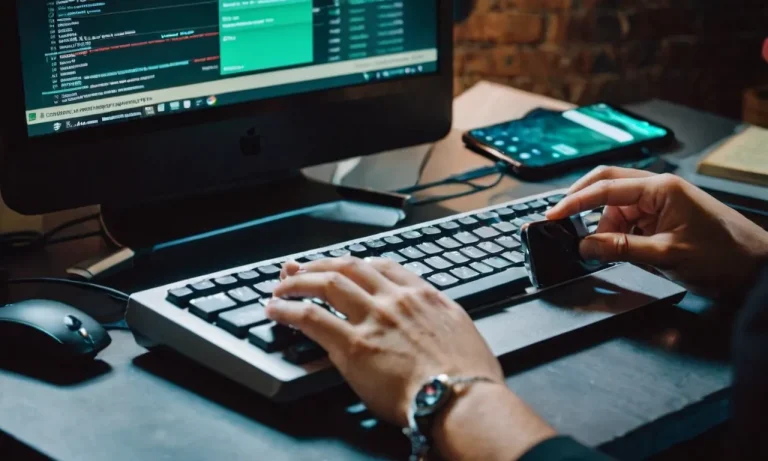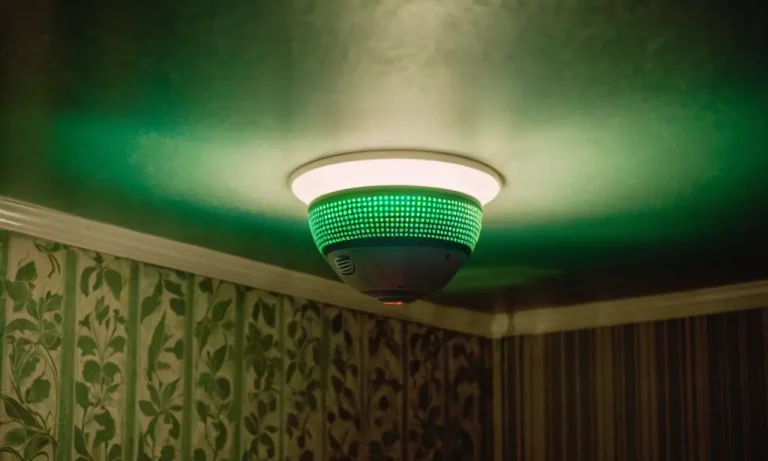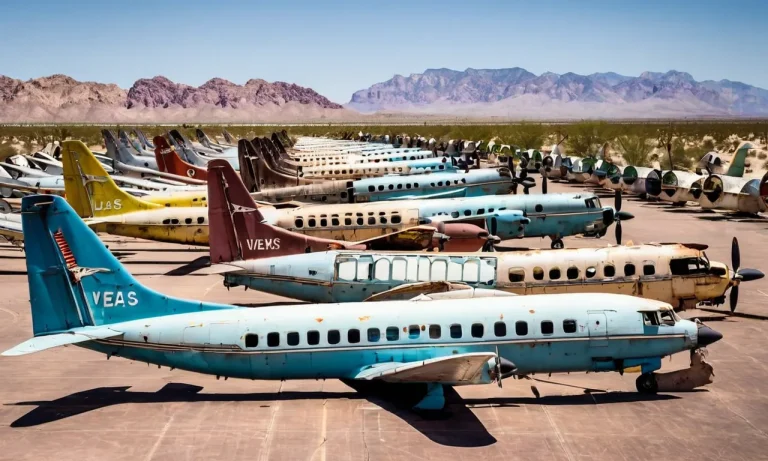When Will Pilots No Longer Be Needed?
The prospect of pilotless commercial flights captures the imagination. With rapid advancements in aviation technology and artificial intelligence, many wonder if the days of human pilots are numbered.
If you’re short on time, here’s a quick answer: Experts estimate pilots will still be needed for commercial flights for at least the next few decades. However, their role may evolve to be more oversight focused as planes gain higher levels of automation.
In this comprehensive guide, we’ll explore the current state of autonomous flight technology, challenges still facing its widespread adoption, projections for when pilots may no longer be required onboard commercial flights, and how the role of pilots may transform in the nearer future.
Current Capabilities of Autonomous Flight
With advancements in technology, there has been a growing interest in the potential for autonomous flight. While complete automation in aviation is still a distant reality, there have been significant developments in recent years that have showcased the current capabilities of autonomous flight.
Successes in Test Flights
Autonomous flight has already achieved remarkable milestones in test flights. Companies like Boeing, Airbus, and NASA have conducted successful trials of autonomous aircraft, demonstrating their ability to take off, fly, and land without human intervention.
These test flights have shown that autonomous systems can effectively navigate through various weather conditions and handle emergency situations.
For instance, Airbus conducted a test flight in 2019 where an A350-1000 aircraft autonomously performed takeoff, taxiing, and landing. This accomplishment highlighted the precision and reliability of autonomous systems in executing complex flight maneuvers.
Moreover, autonomous drones have become increasingly prevalent in today’s society. Companies like Amazon and Google are actively testing drone delivery systems, which rely on autonomous flight capabilities.
These drones can navigate through urban environments, avoid obstacles, and safely deliver packages to their intended destinations.
Limits of Existing Technology
While the successes in test flights are promising, it’s important to acknowledge the limits of existing technology in achieving fully autonomous flights. Currently, the industry focuses more on partial automation rather than completely replacing pilots.
One of the major challenges is ensuring the reliability and safety of autonomous systems. While autonomous flight has shown potential, the human touch is still needed to handle unforeseen circumstances and make critical decisions.
Pilots possess the experience and intuition necessary to handle emergencies or irregular situations that automated systems may struggle with.
Additionally, issues such as cybersecurity and regulatory frameworks need to be addressed before widespread adoption of autonomous flight can occur. Ensuring the security of autonomous systems and establishing clear guidelines and regulations are critical steps in the development of this technology.
It is worth noting that even with advancements in autonomous flight, pilots will still play a crucial role in aviation. They provide a sense of reassurance to passengers and are responsible for overall flight safety.
Furthermore, pilots bring a human element to the cockpit, which cannot be easily replaced by technology alone.
As technology continues to progress, the capabilities of autonomous flight will undoubtedly improve. Nevertheless, the complete replacement of pilots is unlikely to happen in the near future. Instead, the industry is moving towards a collaborative approach, where pilots and autonomous systems work together to enhance safety and efficiency in aviation.
Obstacles to Pilotless Commercial Flights
While the concept of pilotless commercial flights may seem like something out of a science fiction movie, it is actually a topic that has garnered significant attention in recent years. However, despite technological advancements, there are several obstacles that need to be overcome before pilotless flights become a reality.
Regulatory Hurdles
One of the major obstacles to pilotless commercial flights is the existing regulatory framework. Aviation authorities around the world have stringent rules and regulations in place to ensure the safety of passengers and crew.
These regulations were designed with human pilots in mind, and adapting them to accommodate pilotless flights will require extensive changes and approvals.
Furthermore, the legal and liability issues surrounding pilotless flights are complex. In the event of an accident or emergency, who would be held responsible? These questions need to be resolved before pilotless flights can be widely implemented.
Consumer Trust Issues
Another challenge to overcome is consumer trust. For many people, the idea of flying without a human pilot may be unsettling. Passengers have come to rely on the expertise and experience of pilots, and convincing them that pilotless flights are just as safe, if not safer, will be crucial.
Building consumer trust will require effective communication and education campaigns. Airlines and aviation authorities will need to provide transparent information about the technology and safety measures in place to reassure passengers that their well-being is a top priority.
Addressing Safety Concerns
Safety is paramount in aviation, and ensuring the safety of pilotless flights is a significant challenge. While autonomous systems have advanced considerably, there is always the possibility of technical failures or unforeseen circumstances that require human intervention.
Developing robust fail-safe mechanisms and redundancies will be essential to address safety concerns. This will require extensive testing and validation to ensure the systems can handle a wide range of scenarios and emergencies.
Infrastructure Needs
Pilotless flights will also require significant changes to existing infrastructure. Airports will need to be equipped with advanced technologies such as remote control centers and landing systems that can communicate with autonomous aircraft.
In addition, the air traffic control systems will need to be upgraded to accommodate the increased complexity of managing pilotless flights. This will require significant investments in infrastructure and training for air traffic controllers.
Projected Timeline for Phasing Out Pilots
Advancements in technology have sparked discussions about the possibility of autonomous aircraft and the potential impact on the role of pilots. While the idea of pilotless planes may seem like something out of a science fiction movie, experts predict that we may see significant changes in the aviation industry within the next few decades.
Roles Remaining for Pilots
Despite the advancements in automation, pilots will still play a crucial role in the aviation industry for the foreseeable future. While the exact timeline for phasing out pilots is uncertain, it is important to note that there are certain tasks and responsibilities that cannot be easily replaced by technology.
1. Decision-Making: Pilots are trained to make critical decisions in emergency situations where split-second judgment is necessary. Technology may assist in data analysis and provide recommendations, but the final responsibility for decision-making will likely remain with the pilot.2. Passenger Comfort: The presence of a pilot on board provides a sense of security and reassurance to passengers. The human touch and ability to communicate with passengers in times of turbulence or other challenging situations cannot be replicated by machines.3. Complex Situations: While automation can handle routine flights, complex situations such as severe weather conditions or technical failures may require human intervention. Pilots are trained to handle these situations and can adapt to unforeseen circumstances.
Scenarios Where Pilots Are Still Needed
While technology continues to advance, there are certain scenarios where pilots will still be needed, even as automation becomes more prevalent.
1. Regulatory Requirements: Aviation authorities have stringent regulations in place that require a pilot to be present in the cockpit. These regulations are in place to ensure safety and to provide oversight during flights.2. Public Perception and Trust: The public’s perception and trust in pilotless planes are crucial factors that need to be considered. It will take time for passengers to feel comfortable flying without a human pilot in control.3. Legal and Liability Issues: The legal and liability aspects of pilotless planes are still being debated. In the event of an accident or incident, determining responsibility and liability may be complex without a human pilot involved.
It is important to remember that advancements in technology should be seen as a means to enhance safety and efficiency in aviation, rather than completely replacing the role of pilots. The timeline for phasing out pilots may vary depending on various factors, including technological advancements, regulatory changes, and public acceptance.
For more information on the future of aviation and the role of pilots, visit International Civil Aviation Organization or Federal Aviation Administration.
How Jobs of Pilots May Evolve
In the age of advancing technology and automation, the role of pilots in the aviation industry is expected to undergo significant changes. While it is unlikely that pilots will become obsolete, their responsibilities and the way they carry out their tasks may evolve.
Let’s explore some potential ways in which the job of pilots could change in the future.
Oversight and Exception Handling
One possible future scenario is that pilots could shift towards a more supervisory role, focusing on oversight and exception handling. With the help of advanced automation systems, pilots could monitor flight operations and step in only when necessary, allowing the technology to handle routine tasks and procedures.
This would free up pilots to concentrate on crucial decision-making, problem-solving, and handling unexpected situations.
By leveraging their expertise and experience, pilots would be better equipped to analyze complex data and make informed decisions in critical moments. They would act as the final safety net, ensuring that the automated systems are functioning correctly and intervening when necessary to maintain the safety of the flight.
Working Alongside Automation
Another possibility is that pilots could work in tandem with advanced automation systems, forming a symbiotic relationship. The automation systems would handle the repetitive and mundane aspects of flying, while pilots would focus on higher-level tasks such as strategic planning, navigation, and communication with air traffic control.
This collaboration between pilots and automation systems could lead to more efficient and streamlined operations, making air travel safer and more reliable. Pilots would have access to real-time data and analytics provided by the automation systems, enabling them to make informed decisions and optimize flight performance.
Pilots as Computer Operators
In a future where technology plays an even more prominent role in aviation, pilots could become more like skilled computer operators. They would be responsible for programming and monitoring the advanced software systems that control the aircraft.
This would require pilots to have a deep understanding of the underlying technology and the ability to troubleshoot and resolve any technical issues that arise.
While the automation systems would handle most of the flight operations, pilots would still need to maintain their piloting skills and be prepared to take over manual control if necessary. This combination of technical expertise and piloting skills would ensure a seamless integration of human and machine capabilities in the cockpit.
It’s important to note that these potential changes in the role of pilots are still speculative and subject to ongoing discussions and debates within the aviation industry. The ultimate goal, however, remains the same – to enhance safety, efficiency, and reliability in air travel, while utilizing the unique skills and experience that pilots bring to the cockpit.
Preparing for Increased Automation
As technology continues to advance at an unprecedented rate, it’s natural to wonder when pilots will no longer be needed in the aviation industry. While complete pilotless flights may still be a distant future, there are significant changes happening in the industry to prepare for increased automation.
This article explores the steps being taken to adapt to this evolving landscape.
Training Next Generation of Pilots
Even with the advent of automation, there will always be a need for skilled pilots in the aviation industry. However, the role of pilots is shifting from manual control to more of a supervisory and decision-making role.
To prepare the next generation of pilots, training programs are being updated to include more emphasis on automation technology and systems management.
Flight schools are incorporating advanced simulators that allow aspiring pilots to gain experience in managing automated systems. These simulators provide a realistic environment to practice critical decision-making and emergency scenarios.
By giving pilots hands-on experience with automation, they can develop the necessary skills to effectively work alongside automated systems.
Adapting Industry Skillsets
As automation becomes more prevalent in aviation, pilots are required to adapt their skillsets to suit the changing needs of the industry. While traditional flying skills remain important, pilots now need to possess a strong understanding of automation systems and how to effectively interact with them.
Airlines and aviation organizations are investing in additional training programs to ensure their pilots are equipped with the necessary knowledge and skills. This includes providing education on automation technology, system monitoring, and problem-solving in an automated environment.
By staying updated with the latest advancements, pilots can effectively integrate automation into their workflows and enhance safety in the skies.
Rethinking Aviation Regulations
With the increasing use of automation in aviation, industry regulators are reevaluating existing regulations to address the changing landscape. The goal is to strike a balance between innovation and safety.
This involves monitoring the effectiveness of automated systems, establishing clear guidelines for their use, and ensuring that pilots remain competent in their supervisory roles.
Regulatory bodies such as the Federal Aviation Administration (FAA) and the International Civil Aviation Organization (ICAO) are working closely with industry stakeholders to develop and implement updated regulations.
These regulations aim to ensure that automated systems are reliable, robust, and properly integrated into aircraft operations. They also focus on maintaining pilot proficiency and competency in overseeing automated flights.
By rethinking aviation regulations, regulators are driving the industry towards a future where automation and human skills can coexist harmoniously. This approach ensures that safety remains a top priority while reaping the benefits that automation brings to aviation.
Conclusion
While fully automated commercial flights still have hurdles to overcome, aviation is clearly progressing to higher levels of autonomy. Rather than worrying about the existential threat to their careers, pilots should focus on re-training for the highly technical oversight and exception handling roles they will continue playing as co-pilots alongside automation.
By preparing for increased automation and developing adaptable skill sets, today’s pilots can build resilient careers no matter how quickly artificial intelligence capabilities advance. One thing is for certain – automation will transform the aviation industry and the role of pilots within it over the next two decades.








